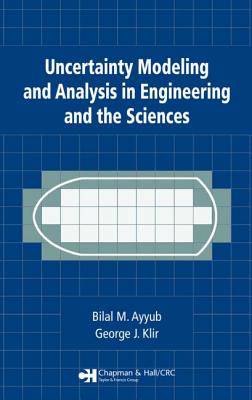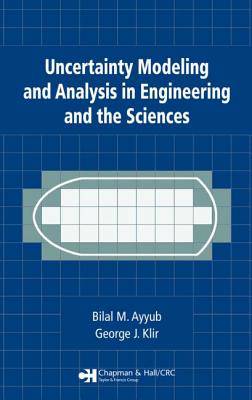
- Afhalen na 1 uur in een winkel met voorraad
- Gratis thuislevering in België vanaf € 30
- Ruim aanbod met 7 miljoen producten
- Afhalen na 1 uur in een winkel met voorraad
- Gratis thuislevering in België vanaf € 30
- Ruim aanbod met 7 miljoen producten
Zoeken
Uncertainty Modeling and Analysis in Engineering and the Sciences
Bilal M Ayyub, George J Klir
Hardcover | Engels
€ 274,95
+ 549 punten
Omschrijving
Engineers and scientists often need to solve complex problems with incomplete information resources, necessitating a proper treatment of uncertainty and a reliance on expert opinions. Uncertainty Modeling and Analysis in Engineering and the Sciences prepares current and future analysts and practitioners to understand the fundamentals of knowledge and ignorance, how to model and analyze uncertainty, and how to select appropriate analytical tools for particular problems. This volume covers primary components of ignorance and their impact on practice and decision making. It provides an overview of the current state of uncertainty modeling and analysis, and reviews emerging theories while emphasizing practical applications in science and engineering. The book introduces fundamental concepts of classical, fuzzy, and rough sets, probability, Bayesian methods, interval analysis, fuzzy arithmetic, interval probabilities, evidence theory, open-world models, sequences, and possibility theory. The authors present these methods to meet the needs of practitioners in many fields, emphasizing the practical use, limitations, advantages, and disadvantages of the methods.
Specificaties
Betrokkenen
- Auteur(s):
- Uitgeverij:
Inhoud
- Aantal bladzijden:
- 400
- Taal:
- Engels
Eigenschappen
- Productcode (EAN):
- 9781584886440
- Verschijningsdatum:
- 1/05/2006
- Uitvoering:
- Hardcover
- Formaat:
- Genaaid
- Afmetingen:
- 162 mm x 235 mm
- Gewicht:
- 684 g

Alleen bij Standaard Boekhandel
+ 549 punten op je klantenkaart van Standaard Boekhandel
Beoordelingen
We publiceren alleen reviews die voldoen aan de voorwaarden voor reviews. Bekijk onze voorwaarden voor reviews.











